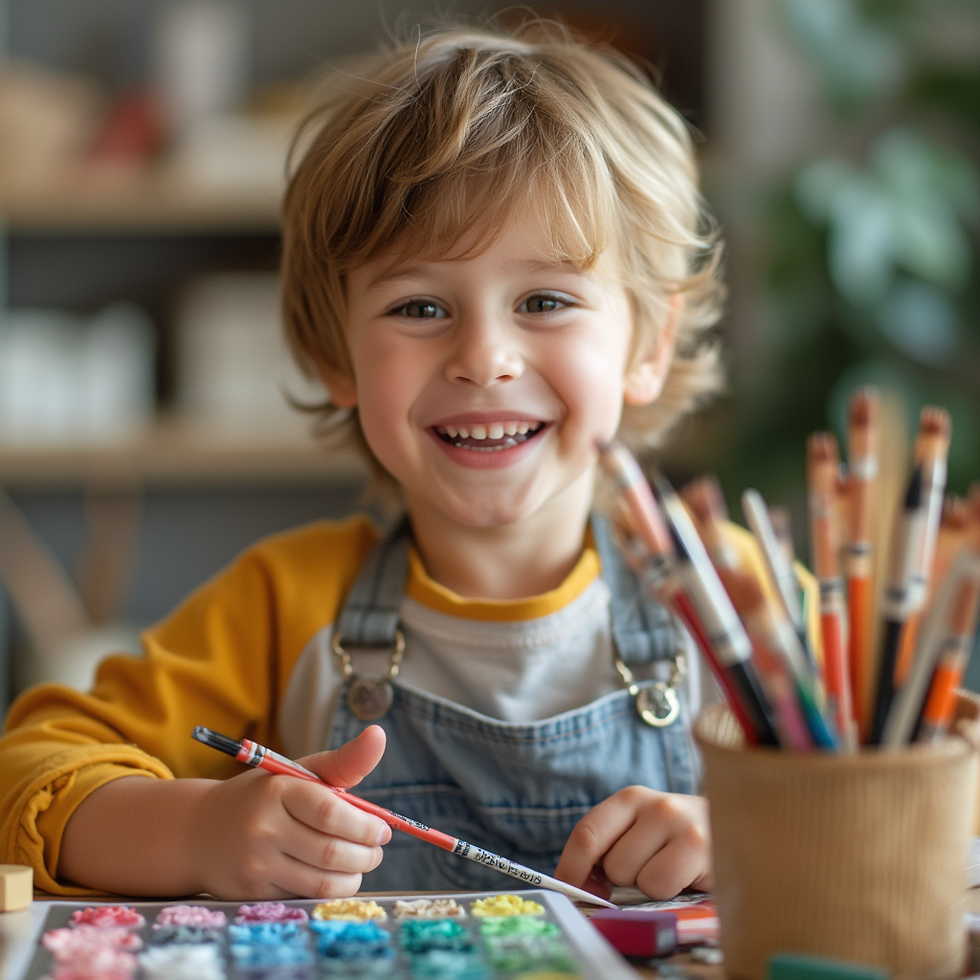From Crayons to Clarity: How Art Therapy Helps Kids Open Up
- Steve Tame HH Dip (A.Th.).

- Jul 7
- 2 min read

When your child won’t talk, it can feel like you’re locked out of their world. You ask gentle questions. You give them space. You try again later. Still—nothing. It’s heartbreaking, confusing, and deeply frustrating.
But while your child might not be able to find the right words, their drawings often speak volumes.
Why Some Kids Shut Down Emotionally
If your child is anxious, withdrawn, or just unusually quiet, you’re not alone. Many parents struggle with that same sinking feeling: Something’s not quite right, but I can’t work out what it is.
The truth is, children often don’t have the emotional vocabulary to explain what’s going on inside. When big feelings like fear, sadness, or shame come up, kids are more likely to act out—or shut down. And in some cases, they simply don’t understand their own inner world well enough to put it into words.
That’s where art steps in.
The Power of Art to Bypass the Filter
Art taps into the unconscious. A simple drawing—a house, a tree, a sun—can reveal themes of safety, hope, fear, or isolation. When children draw, they often tell the truth without even knowing it.
That’s because drawing doesn’t rely on language. It bypasses the conscious mind and expresses what’s really going on underneath.
A child’s landscape drawing, in particular, can give deep insight into their inner world:
The sky often reflects their emotional and mental state—whether it’s stormy, clear, dark, or light.
Mountains symbolise obstacles—and how the child perceives or relates to those challenges.
The path represents their ability to work through difficulties—its presence, shape, or absence can speak volumes.
Trees reveal the child’s general attitude to life—growth, vitality, hope, or stagnation.
It’s not about interpreting every little detail—it’s about noticing patterns, themes, and emotional tone. And sometimes, the most powerful message is what’s missing from the page.
Learning to Read Between the Lines
With a little guidance, you can start to see what your child’s artwork is telling you:
Are they feeling safe or unsettled?
Do they see themselves as connected or isolated?
Is there hope in their picture, or a sense of overwhelm?
These aren’t always conscious choices. That’s what makes art such a powerful window into the unconscious.
How This Helps You Support Your Child
Understanding your child’s drawings gives you a new way to connect—without pushing, prying, or overwhelming them with questions.
Instead of guessing what’s wrong, you can respond to what they’re already showing you. You can offer reassurance in a way that meets them where they’re at. And if needed, you’ll have the insight to know when to seek further support.
Art opens the door. You just need to know how to walk through it.
Want Help Interpreting Your Child’s Drawing?
I offer professional analysis of children’s drawings to help parents understand what’s going on beneath the surface. It’s not therapy—but it is therapeutic. And for many families, it’s the first real breakthrough in understanding a child who won’t—or can’t—open up.



































Comments